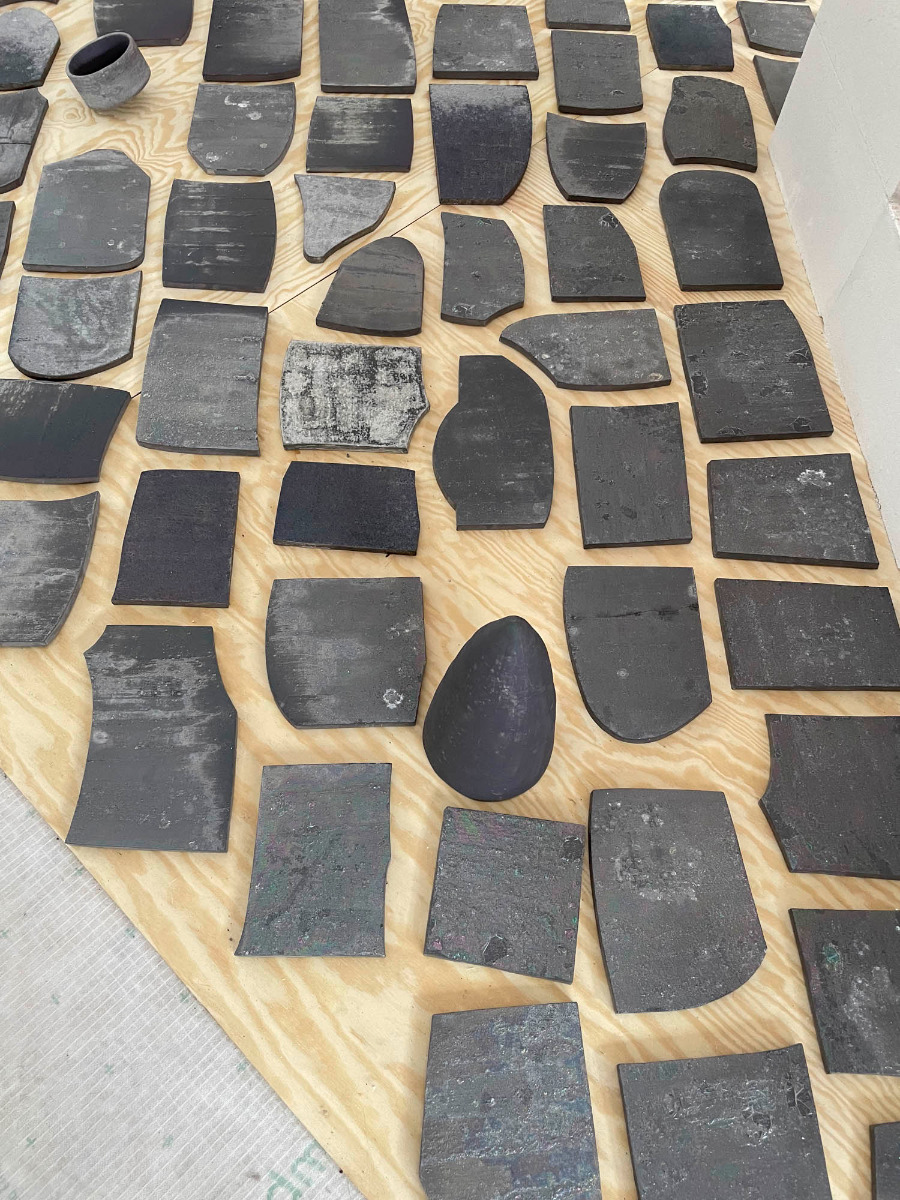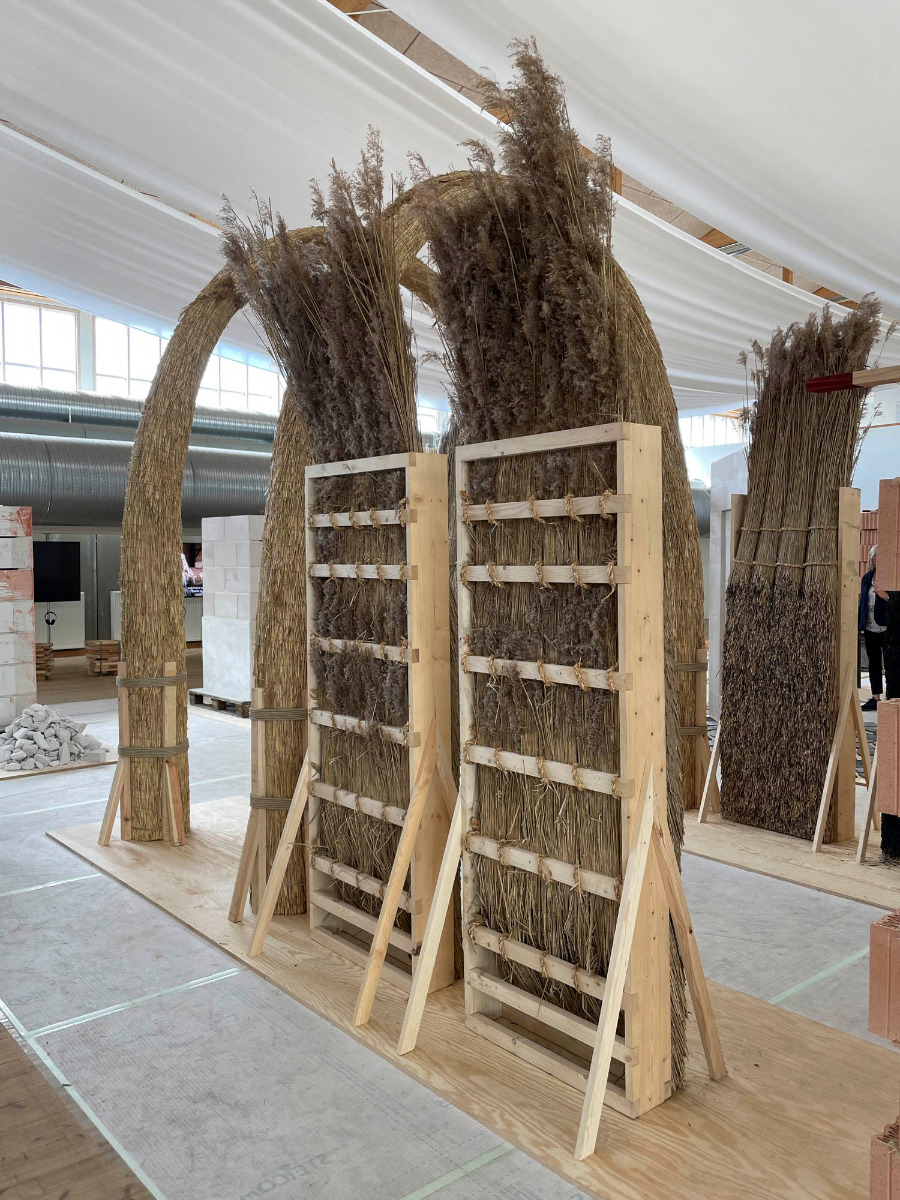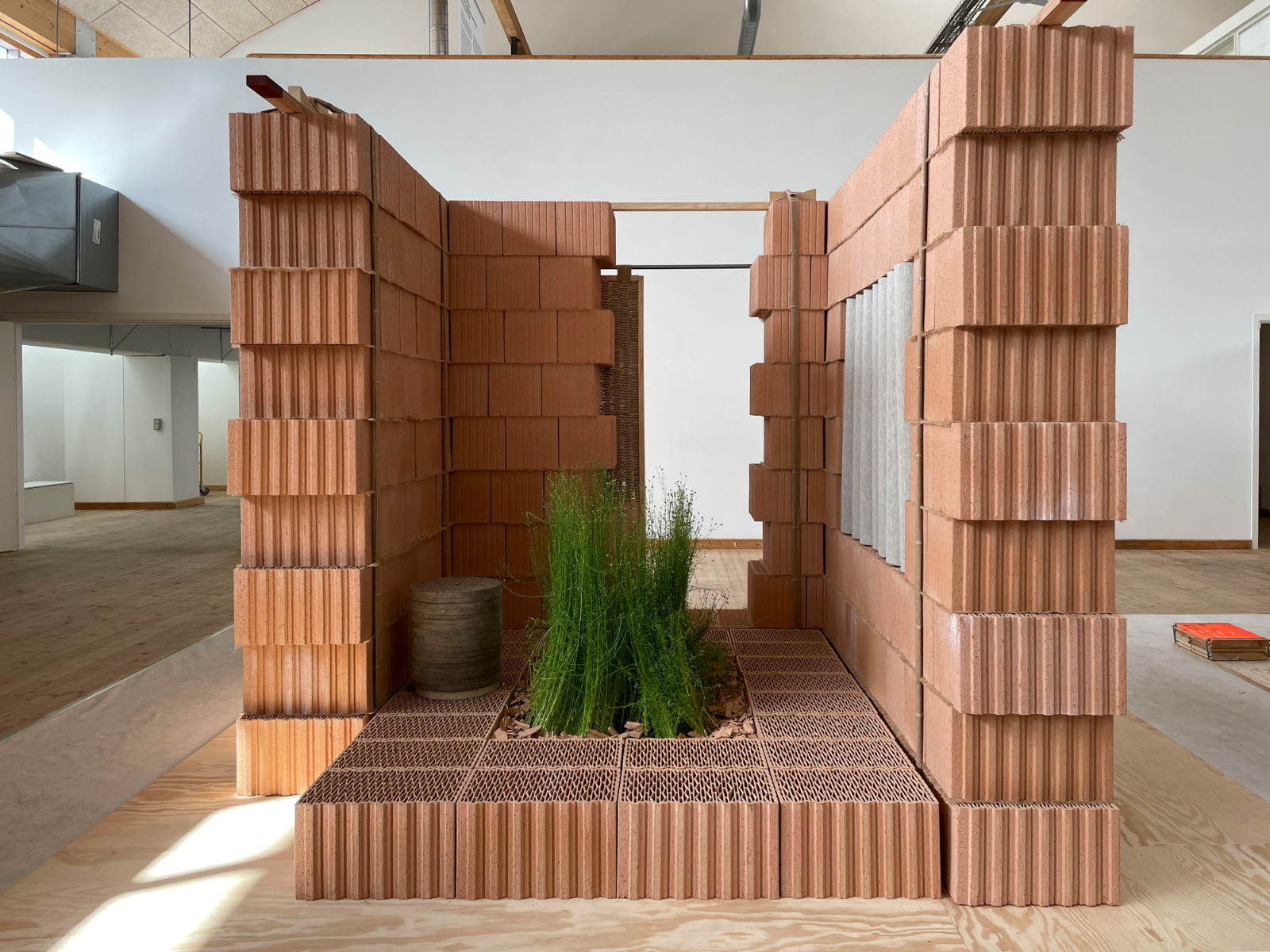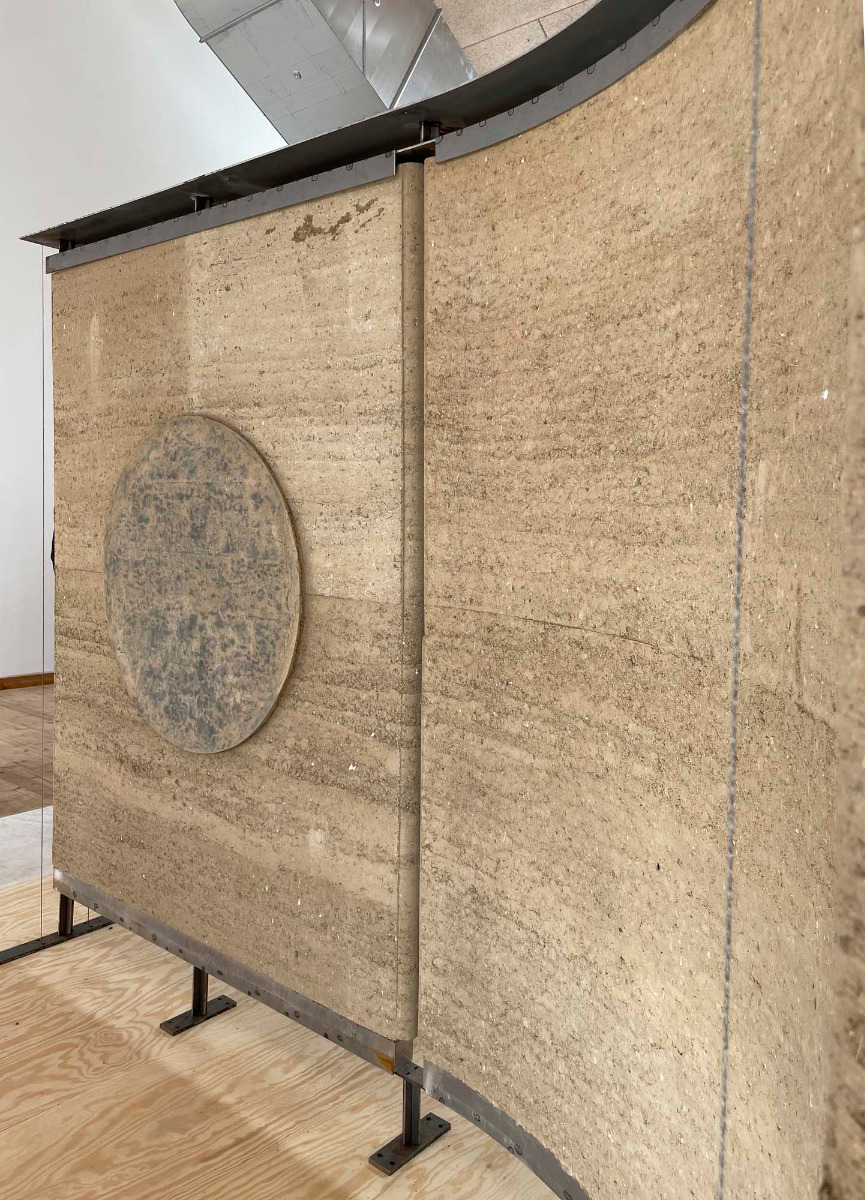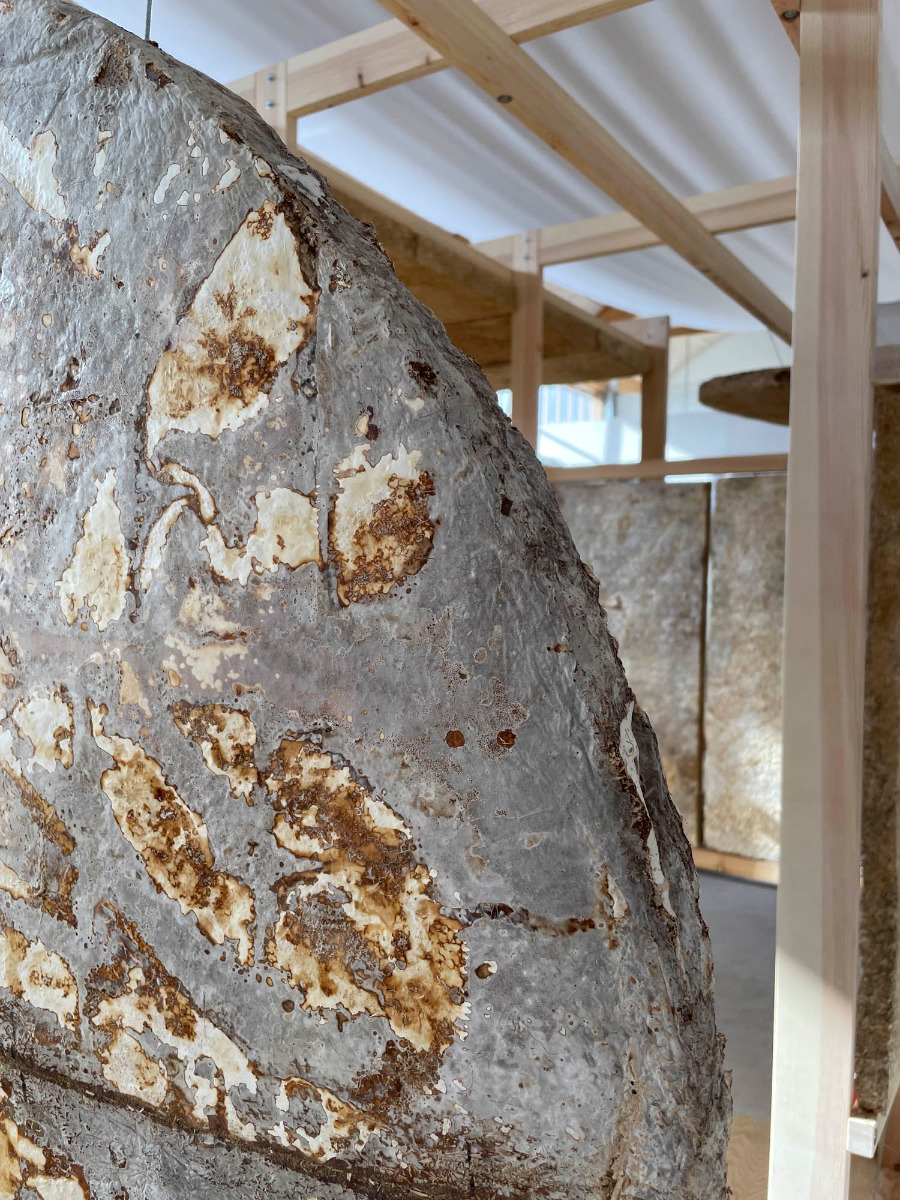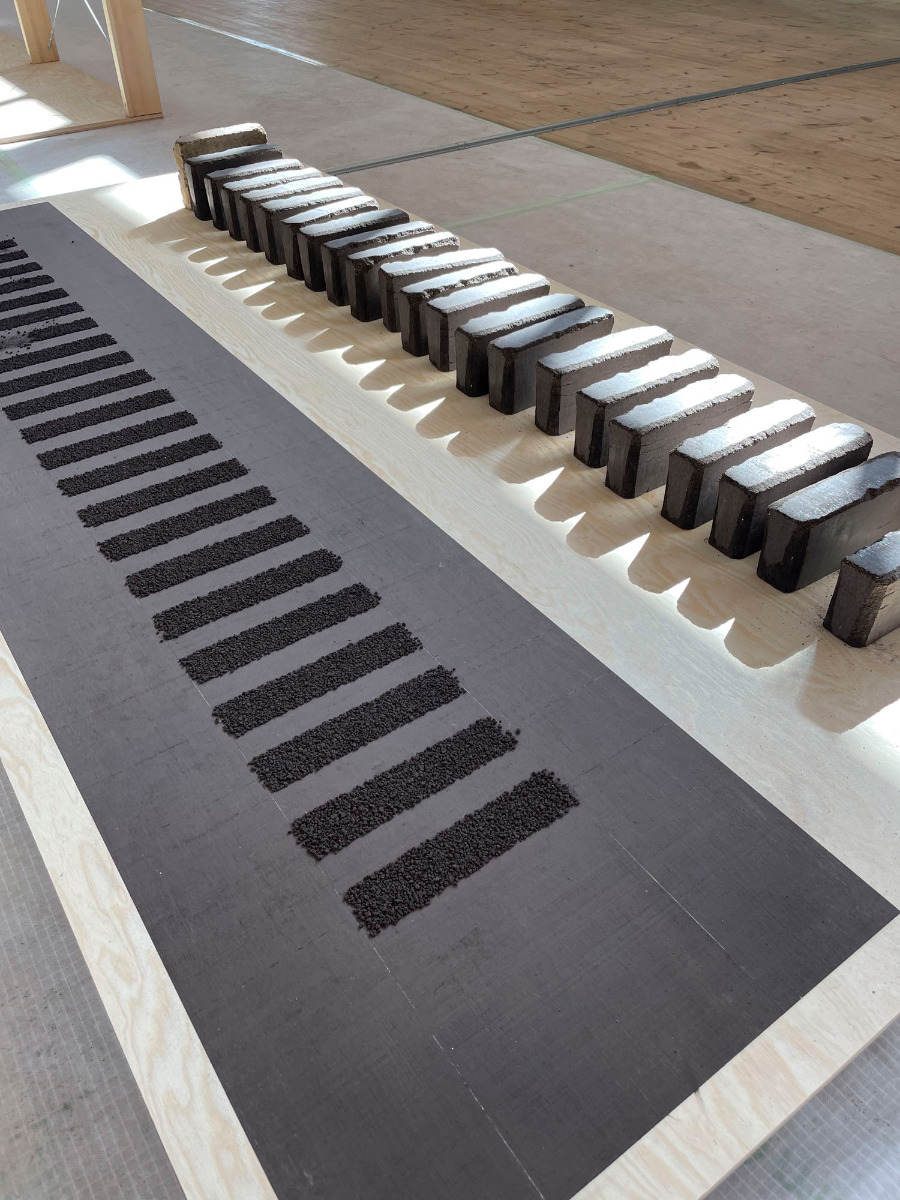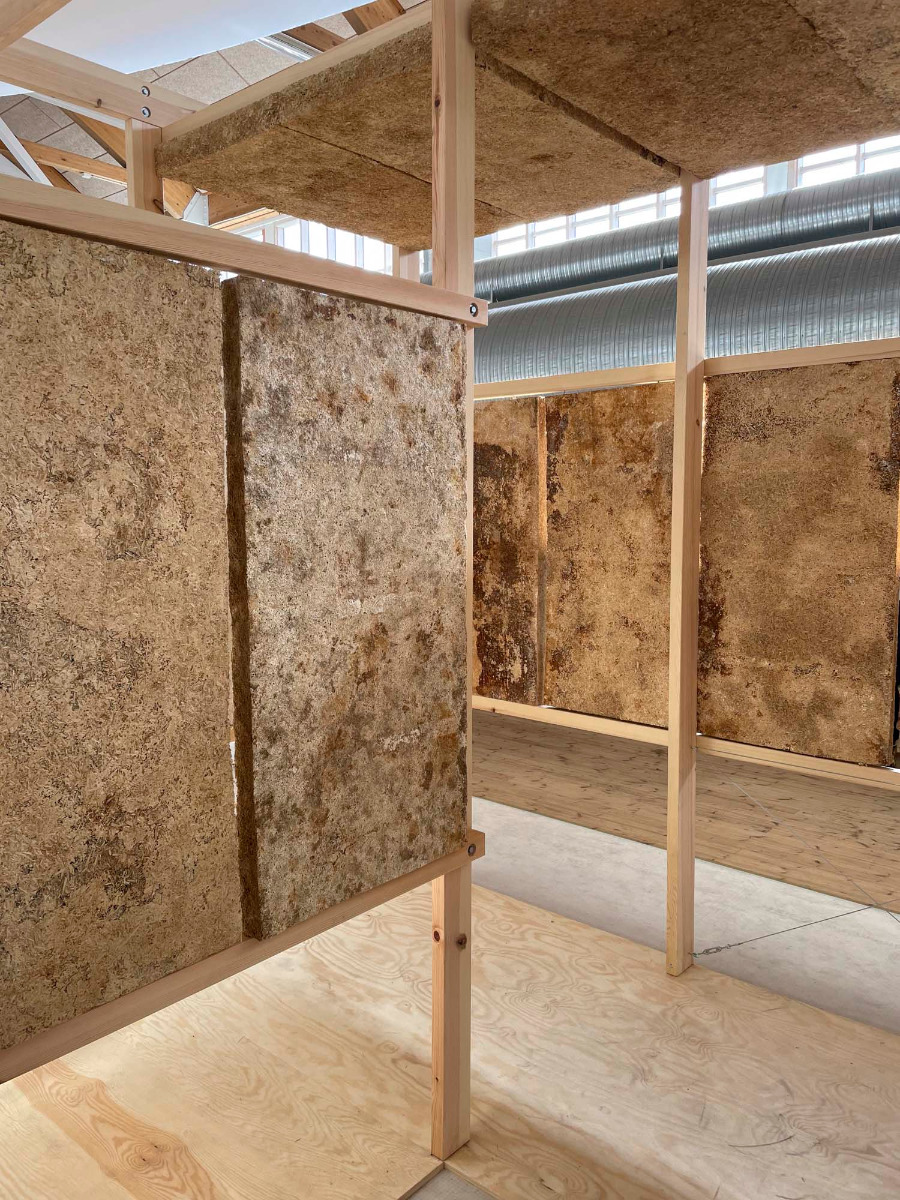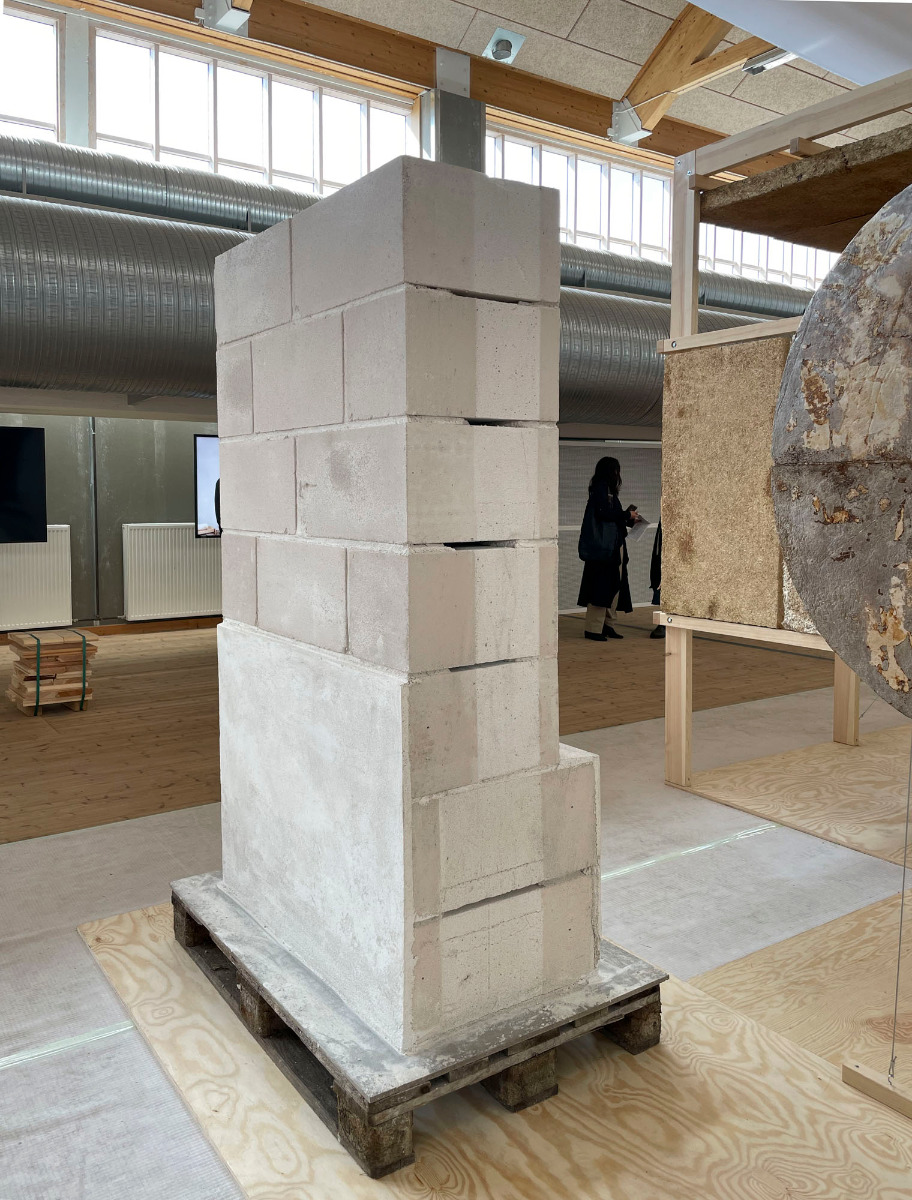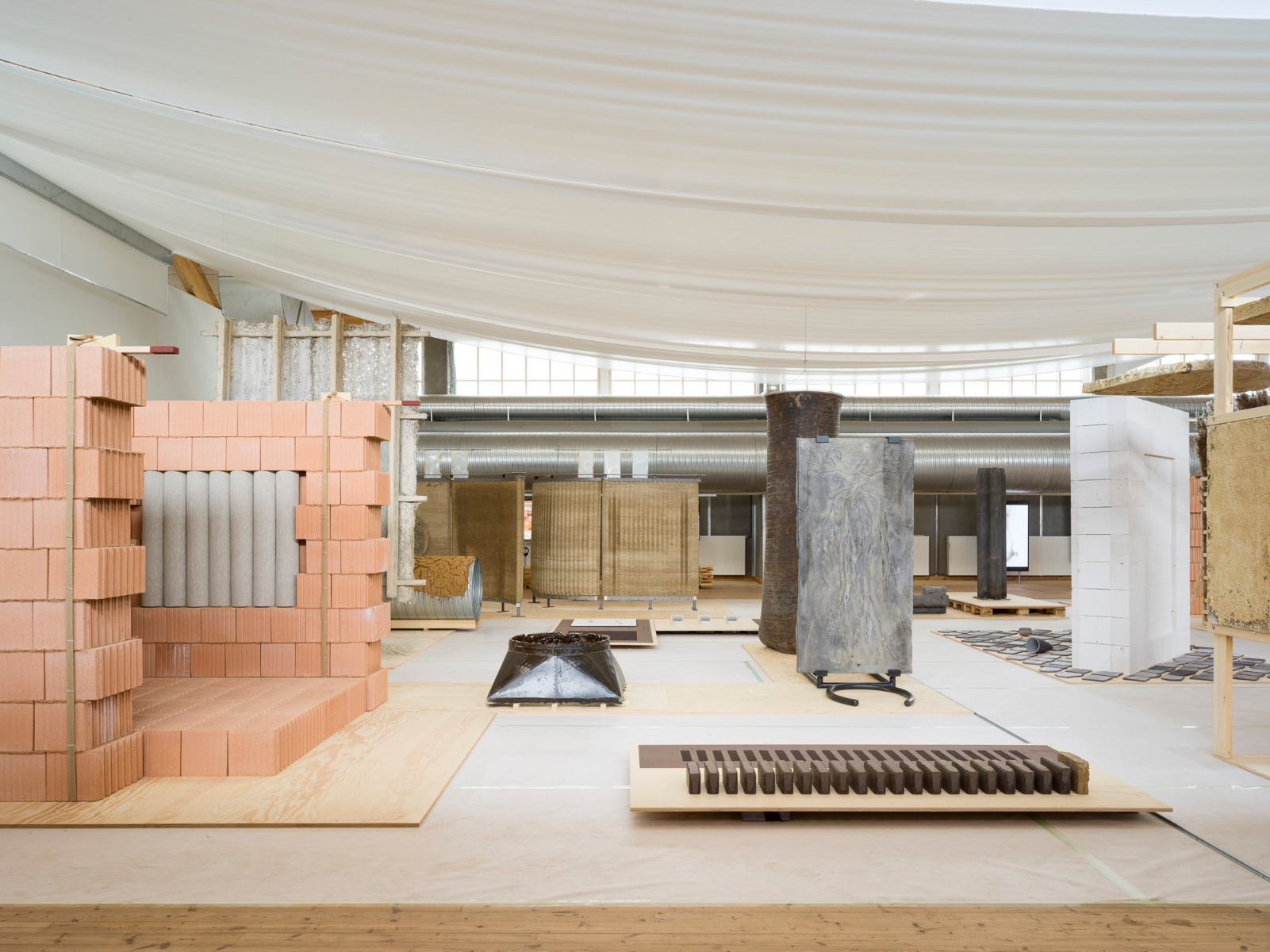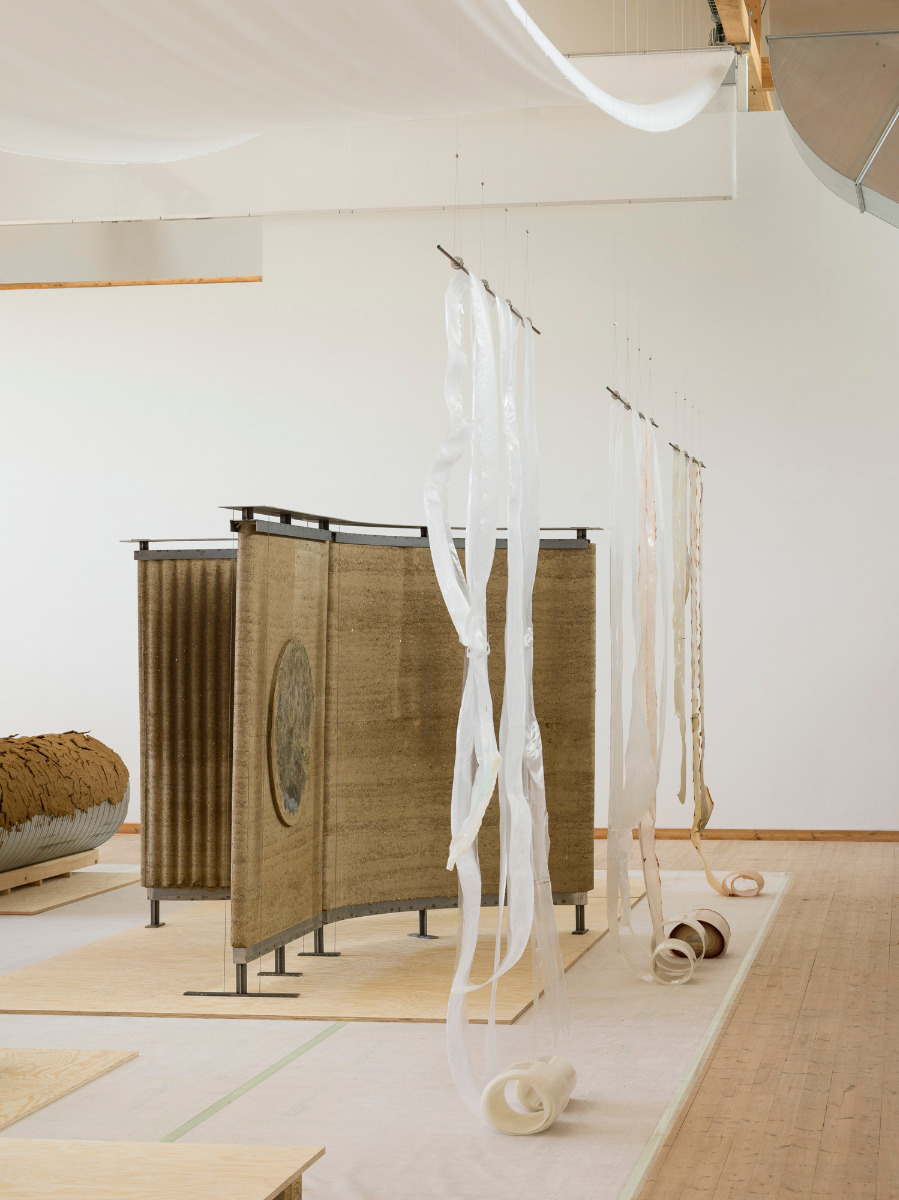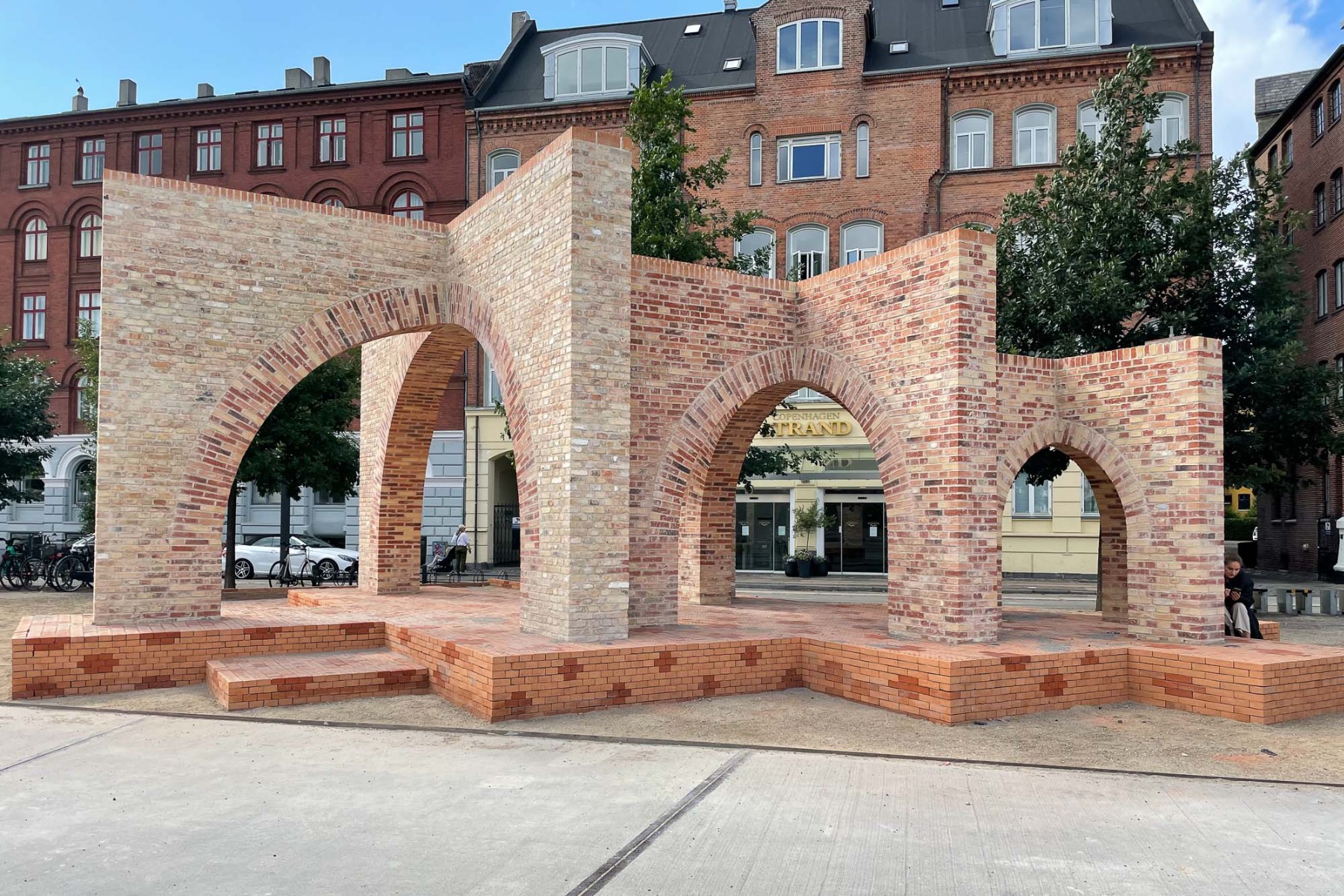Building materials of the future
Reset Materials – Towards Sustainable Architecture in Copenhagen

A view of the exhibition Reset Materials – Towards Sustainable Architecture, © Hampus Berndtson
For the exhibition Reset Materials at the Copenhagen Contemporary art centre, artists and architects have reinterpreted natural and recycled building goods.


Degradable dry masonry made from vertically perforated bricks, © Jakob Schoof
Concrete, brick and many, many composites: even in Denmark, architecture has dominated the traditional materials canon of the past 50 years. However, increasing numbers of builders are wondering how long this can continue. Consequently, the debate surrounding future building materials and methods was a highlight of this year’s UIA World Congress, which took place at the beginning of July in Copenhagen, and its framework program as well.
Copenhagen Contemporary – which describes itself as the country’s largest exhibition hall for contemporary art – is contributing to the discussion with its first architecture exhibition: Reset Materials. One year ago, around 50 teams comprising architects, artists and artisans responded to a call for projects. Ten of these were then selected to participate by architect and curator Chrissie Muhr and her team.


The teams thought about the design and integration of materials in future building constructions. © Jakob Schoof
Building materials reinterpreted
The entire show is being presented in a repurposed industrial building on the island of Refshaleøen, a former wharf area near the CopenHill waste-incineration facility by BIG. In keeping with this rough environment, Reset Materials asserts itself as a combination of high-class building site and showroom for the building materials of tomorrow. Among these are also old acquaintances that are being presented in unconventional ways, such as demountable dry masonry of perforated brick whereby woven hemp replaces the usual mortar in the joints. Or such as incredibly slender partition-wall constructions made of rammed earth and stabilized by tension wires. The surprisingly stable arches made of reeds erected in the exhibition hall by a team from the Royal Danish Academy send a clear “back to nature” signal.


© Jakob Schoof


© Jakob Schoof
Biocement and mycelium
Other contributions experiment with innovative materials like mycelium, which is excellent as acoustic cladding for indoor spaces, and biocement. This is a concrete substitute, developed by an American company, that hardens by means of bacteria. The first European project using this material will be erected in Denmark in the next few years.


The exhibition shows established and novel building materials. © Hampus Berndtson
Innovative brick glazes
A further focus of Reset Materials is waste materials still awaiting discovery for their use in architecture. For example: silicon. About half of this raw material, whose highly pure form is used in manufacturing chips, ends up as garbage and is not recycled. One of the teams has mixed this silicon with clay, fired it into bricks and produced brick glazes from it as well. Visitors to the show at Copenhagen Contemporary will also encounter recycled plastic – in this case, made of discarded surgical materials from one of the city’s large hospitals. The applications of the long, plastic strips in the building industry have been left to the imagination.


© Jakob Schoof


© Jakob Schoof
The idea that the contributions present only “raw” materials is more of an exception to the rule. Most of the teams have also considered questions of design and incorporation into future construction projects. In this respect, their interdisciplinary collaboration has enhanced the exhibition.
Exhibition: Reset Materials – Towards Sustainable Architecture
Exhibition venue: Copenhagen Contemporary, Refshalevej 173A, 1432 København (DK)
Exhibition dates: Bis 28. September 2023
Opening hours: Wednesday to Sunday 11am–6 pm, Thursday until 9 pm
More information: copenhagencontemporary.org





